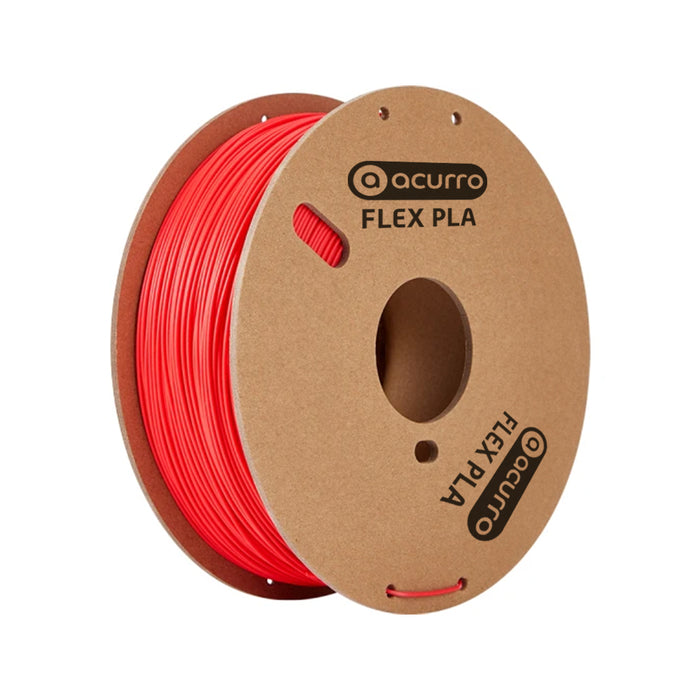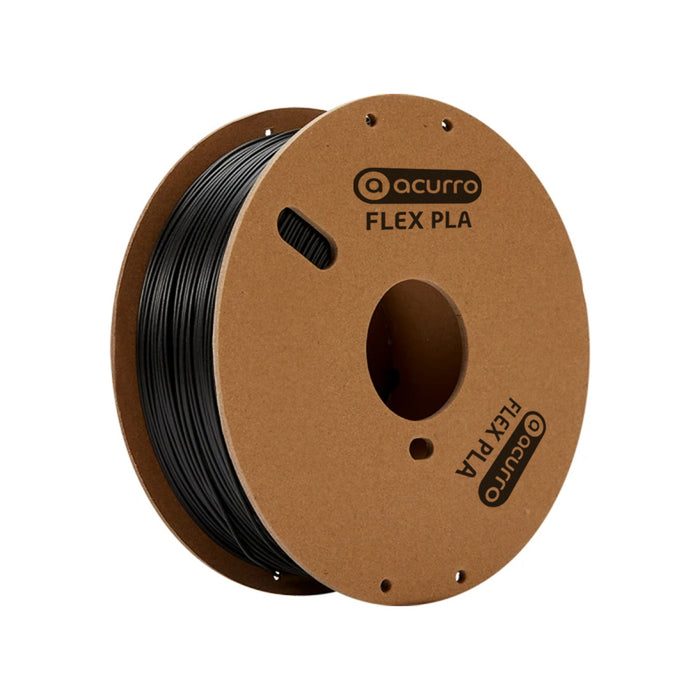

Polylactic acid, which is often referred to as PLA, is one of the easiest types of filament to work with for those that are new to 3D printing. It’s made using a fermentation process involving plant materials that produce lactic acid as they degrade - making PLA an environmentally friendly bioplastic, especially when compared with other types of filament such as ABS.
PLA filament is one of the most commonly used types of filament due to how easy it is to print with, and its versatility, as PLA plastic features unique properties that make it suitable for a wide range of applications. It’s the sensible option for any number of different projects.
PLA 3D Printing Filament Specifications:
PLA 3D Printing Spool Specifications:
- Width: 69mm
- Diameter: 194mm
- Axle: 70mm
- Card Construction
PLA 3D Printing Filament Requirements:
Creality Ender-3 Neo 3D Printer
FLSUN QQ-S Pro Delta 3D Printer
Creality Ender 3 v2 Neo 3D Printer
Elegoo Neptune 4 FDM 3D Printer
Advantages of PLA 3D Printing
- PLA material melts at a relatively low temperature, with the PLA melting point being between 210 - 225°C, PLA also doesn’t require a heating bed - although if you are going to use one we’d recommend setting the temperature to between 40 - 50°C. Although for the same reason we wouldn’t recommend using PLA for printing parts that need to be heat resistant as high temperatures can cause warping.
- The PLA density also makes it perfect for printing ornamental objects such as gadgets and toys, however we would recommend avoiding printing outdoor furniture or objects with our 1.75mm PLA as it degrades quicker when exposed to sunlight.
- PLA is a bioplastic which makes PLA biodegradable under the right conditions, although you can also recycle PLA - not to mention it produces approximately 80% less greenhouse gases during manufacturing than plastics that use fossil fuels, which means it has a lower carbon footprint too.
Important Information
The most important thing - if this is your first time 3D printing - don’t be too hard on yourself. 3D printing is a learning curve and you’re bound to face some obstacles along the way. One of these obstacles, that we’ve seen many times, is proper bed adhesion.
Before you set out on your journey to master 3D printing PLA it’s essential that you check the instruction manual that comes with your 3D printer and adhere to them - it will save you a lot of time and money compared to learning through trial and error.
Filament Temperature
To get the best PLA we’d recommend setting the PLA printing temperature for your hot-end between 210 - 225°C for your first time; although other filament types might require a lower temperature due to additional substances added to the PLA. Do not exceed the maximum temperature of 225°C, especially if you’re printing at speeds up to 120mm per second as it isn’t safe to do so.
High speed printing has risen in popularity as it can be incredibly useful - especially if you’re trying to print large quantities in a short space of time - to do so you will need to print at higher temperatures to ensure the smooth flow of materials. However you still should not exceed the maximum 225°C temperature.
Bed Temperature
The bed temperature for PLA should be no higher than 50°C maximum; although using a heated bed is optional, not a requirement, as a lower PLA temperature can improve adhesion compared to a higher bed temperature. If you’re having problems with adhesion we’d recommend double checking your level of your bed to make sure it’s as flat as possible and secured properly.
Filament Care
It’s important to clean your filament before dust and debris becomes a problem; loose particles can cause blockages in the extruder which could have been prevented. We’d recommend using a cleaner to remove dust right before it enters the extruder. It doesn’t need to cost a fortune - feeding your PLA filament 1.75mm through a piece of foam or cloth beforehand is a sufficient cleaning mechanism to care for your 1.75mm PLA filament.
PLA Filament Colours
|
What is PLA
A PLA filament is a type of filament derived from plant-based renewable resources like corn starch, sugar cane and other carbohydrates to create a natural thermoplastic. This makes PLA recycling much simpler as it’s biodegradable under the right conditions.
How to dry PLA Filament
The best method of drying your PLA filament is in the oven; set your oven to a low temperature (less than 50°C), allow the oven to preheat and then put your spools inside the oven for approximately 6 hours. Do not leave the PLA in there for longer and do not increase the temperature - it won’t dry your PLA quicker, but could instead cause it to deform.
How to recycle PLA
You might be wondering “is PLA recyclable”. It is, although we wouldn’t recommend attempting recycling PLA filament yourself at home. PLA can be recycled using one of two main methods - a mechanical process and a chemical process. Mechanical recycling is where the PLA is shredded, cleaned and reprocessed into new PLA products. Chemical recycling breaks down the PLA into reusable monomers.
At what temperature does PLA melt?
Depending on the type of PLA you’re using, it can start to soften and deform at around 55°C but its true melting point is somewhere between 170°C to 180°C. The melting point depends on the materials used to create the PLA filament - although for a consistently melted PLA most brands will recommend setting your 3D printer at a slightly higher temperature between 180°C and 220°C.
Does PLA+ print better than PLA?
The results of using PLA+ over PLA may be slightly better but it can be more difficult to print with PLA+. It’s generally believed that when using PLA vs PLA+ you won’t need to set the temperature of your 3D printer as high or calibrate it as precisely. This is due to the fact that PLA+ filament is stronger than PLA and so it requires higher temperatures and a number of adjustments to make using it worthwhile.













